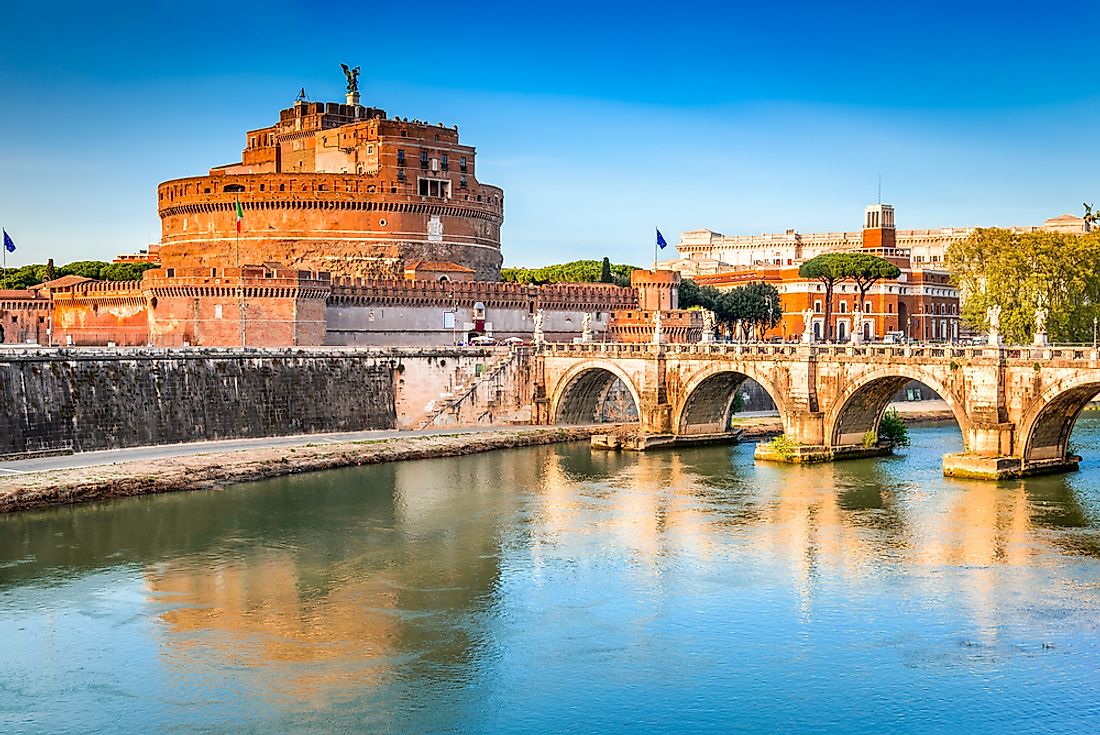Which River is Rome On?

The city of Rome is built on the banks of the Tiber River that splits it into the western and eastern flanks. Much of Rome lies within the eastern bank. Rome has been identified with the river since the days of the Roman Empire where it played a critical role in the development of the city. The Tiber River meanders through the famous hills of the capital surrounded by landmarks of the medieval and ancient architecture. Several bridges connect the right and left banks, enhancing the spectacular sceneries of Rome.
Geography
The Tiber River rises from the slopes of the Apennine Mountains. It flows through Umbria and Lazio where it is joined by the Aniene and Nera Rivers. Before flowing into Rome, the river is flanked by concrete fortifications that lead to the Fossa Traiani channel which guides the water across the capital. The river terminates at the Tyrrhenian Sea. It is 252-miles long and the primary source of water for Rome.
Association Between Rome And Tiber
According to a Roman legend, the city of Rome was founded by Remus and Romulus at the bank of the river where they were to be drowned as newborns. It served as a natural boundary between the Latins to the south, the Sabines to the east, and the Etruscans to the west. Ancient Rome developed its economy by transporting provisions and building materials from the interior using the river
Bridges On The Tiber
Twenty-six bridges connect the western and eastern banks of the river. Some of the bridges were built in the mid and early 20th century, but most medieval bridges were successfully renovated to accommodate the weight and intensity of use. One of the ancient bridges that still stand is the Milvian (Ponte Milvio) bridge built in the first century to connect Rome to Ariminum (Rimini). Today, the bridge stands close to the Stadio Olimpico where Lazio and Roma football clubs play their home games. Recently built bridges include Ponte di Tor di Quinto (1967), and Ponte Nenni (1971–1972.
The Tiber As A Sewer
King Tarquinius Priscus (616 to 579 BC) built a sewer system (Cloaca Maxima) downstream and tunnels upstream to deliver uncontaminated water to the city. The original plan of the Cloaca Maxima was not to serve as a sewer line but to control floods during storms. Rainwater from upstream was channeled to the tunnel to prevent flooding downstream, but it was not until the public connected latrines and public baths to the system that it was designed into a sewer line. It no longer serves as a sewer but continues to channel flood water from the city to the river.











